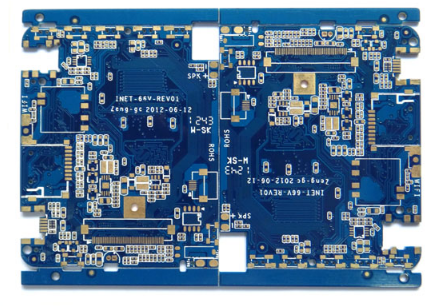Whether it is building a house or building a PCB, you need to use the right tools in the toolbox. Every designer needs to use CAD tools for component placement, but even command-line-based CAD software can be used to accurately place components. As modern electronic devices become more and more complex at all levels, designers need tools that can help speed up basic design tasks.
Choosing the right PCB design tool requires weighing many potential options. There are many software packages on the market with different functions, and no one has time to deal with a free trial of each software package. Some of these design platforms still use the same outdated workflow that was used 20 years ago. With this in mind, let's take a look at some basic tools that every designer needs in PCB design software.
Schematic design and capture

The electronic schematic is like the foundation of a house. Everything placed on the circuit board is based on this basic document. This important document shows the required components of the circuit board, how to connect, and the location of the power and ground connections. Using the correct schematic editor, you can easily plan the layout and annotate the board.
Using the schematic editor can make the circuit board organized, but once the design becomes more complex, using a single schematic may become difficult to handle. Once you start to include multiple functions on the board, you can maintain organization by using layered schematics. This allows components to be divided into different schematic diagrams based on how they match with functional blocks, and a parent-child relationship can be defined between the schematic diagrams.
Using the multi-channel PCB design tool can not only keep organized, but also can easily copy the component groups in the hierarchical schematic diagram. Once the schematic is captured as the initial layout, these repeated groups of parts are transferred to the new board. Then, you can start wiring between components, and place power and ground connections.
The layered schematic diagram can define the relationship between different blocks in the PCB
Routing function
After capturing the schematic as the initial layout, the CAD tool will be on standby at any time to place components and routing traces. Routing is a key task that defines the physical connections between the components on the board. With a simple design, it is easy to manually lay out each connection and check the layout according to the design rules. But as circuit boards become more complex and the number of interconnections required increases, tools that can automate the routing process can save a lot of time.
The argument between the advantages of automatic routers and interactive routers seems to be eternal. For simple circuit boards that do not involve differential pairs, a large number of signal networks, or the number of vias on the interconnection, the autorouter can still produce a suitable layout. Please note that in these cases, if an appropriate routing strategy can be defined, the autorouter will produce a better layout.
This is where automatic interactive routing becomes an important PCB design tool. An automatic interactive routing is the best aspect of hybrid automatic routing and interactive routing. It is possible to manually define waypoints on the interconnection for a given signal network, and the tool will automatically route traces in the network between the source components, these waypoints and the load components.
It is easier to create this type of layout using an automatic interactive router
Signal integrity and power transmission analysis
In terms of signal integrity, the switching speed of modern digital ICs is fast enough to ensure that the signal remains clean has become an important consideration for almost all designers. Ensuring signal integrity really requires designing the correct layer stack, trace geometry, and ground plane for the specific application. All of these are the tasks of CAD, routing and board design tools.
If you use the correct signal integrity package, you can check the reflection and crosstalk waveforms in different networks. This helps determine when termination is needed and which matching network should be used in the different tracks.
In terms of power transmission and thermal management, the power transmission network analyzer (PDNA) can be used to determine the IR loss of the entire trace, power and ground planes, and vias. PDNA should use an intuitive output format to produce voltage and current density results. The best tool will display an interactive color map that can visually check the board for potential power supply thermal issues and excessive IR drop.
The color map shows the power transmission of the entire PCB
PCB design tool based on rule-driven engine
Perhaps the most important part of PCB design is to ensure that the design complies with the basic design rules. When creating a layout, the design function should check the design data against these rules in order to quickly identify problems and make corrections as needed. Design rules can also limit the functionality of CAD and routing functions and comply with important design standards.
Other PCB design packages divide these important functions into different programs, forcing data to be exported and re-imported when moving between programs. When the new version is released, a complicated solution will have to be devised, and there is a real risk that the old data will suddenly become inaccessible. The workflow and interface in this environment are inconsistent in design tools, which can increase the learning curve and reduce design efficiency.